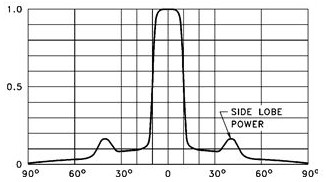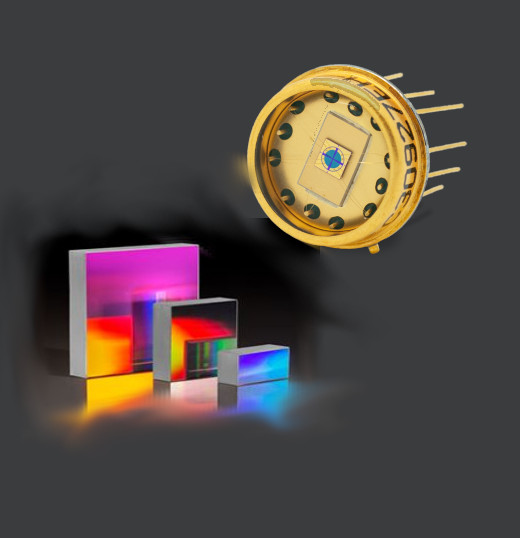
IREDs With Narrow Beam Patterns
A wide angle IRED distributes its radiant flux as shown below. Most of the flux impinges on the lens surface at almost normal incidence. Little is lost to total internal reflection.

Some of the radiant flux in narrow angle IREDs is reflected internally.

The side lobe power is not useful in most applications. It is “lost” to the optical system. Typical emission patterns (beam patterns) are shown below in both polar and rectangular coordinates.

Wide Angle IRED

Narrow Angle IRED

3-D Representation of Emission Pattern of Narrow Beam IRED

Polar Plot of Narrow Beam IRED

Rectangular Plot of Narrow Beam IRED
The side lobes have less peak intensity than the main beam (particularly when viewed in rectangular coordinates). However, the side lobes subtend a much larger solid angle than does the main beam. The net result is that in narrow beam IREDs, the side lobes can actually contain most of the power emitted by the narrow beam IRED. This side lobe power is lost to the main beam and is not useful in the optical system. Thus, the peak radiant intensity increases (mW/sr), but the useful main beam power decreases (mW/cm2) as the beam width is made narrower.
| MAIN BEAM HALF POWER ANGLE |
APPROXIMATE FRACTION OF TOTAL POWER APPEARING IN SIDE LOBES |
| 40 to 60* 20* 10* 5* |
NEGLIGIBLE 10 to 20% 20 to 30% 40 to 60% |
Applications that require maximum useful power and a narrow beam should use a wide angle LED coupled to an external lens to maximize the power coupled into the optical system.

Article based on Application Notes from Excelitas Technologies
Heard on the Internet
Imagination is more important than knowledge.
Albert Einstein






